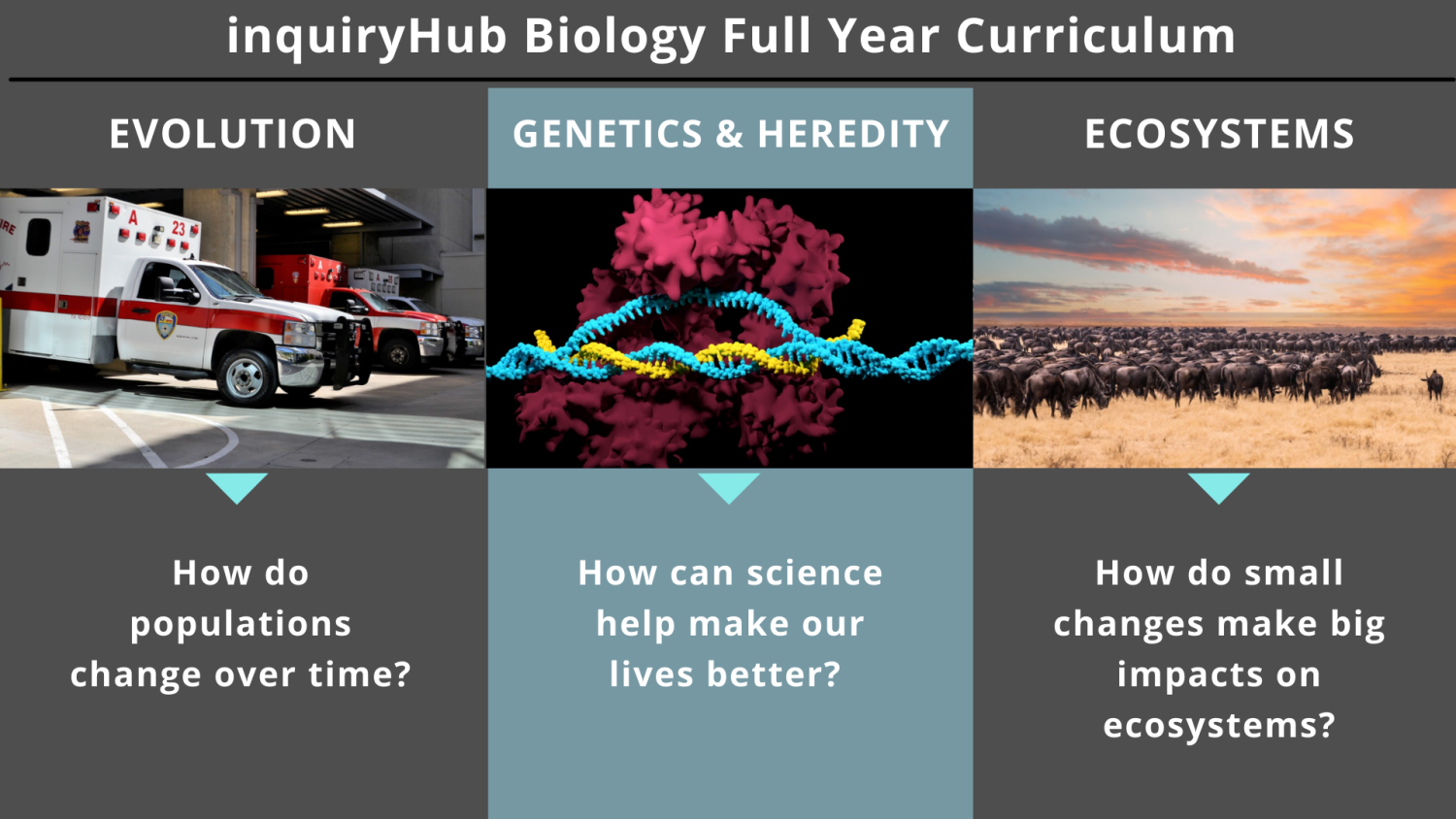inquiryHub Biology
The inquiryHub (iHub) Biology curriculum is a year-long Biology course anchored in phenomena and aligned to the Next Generation Science Standards.

Guided by the Next Generation Science Standards (NGSS), inquiryHub High School Biology embeds community science into curriculum. Using research-based approaches to teaching science in a deeply digital environment, students contribute resources, observations, data, and analyses to solve larger scientific problems.
inquiryHub Biology is designed to go beyond traditional science content. By focusing on phenomena relevant to students' lives and communities, the course provides opportunities to authentically engage with science and engineering practices. The combination of community science, technology, and a focus on science and engineering practices has been shown to help students feel more like scientists, including the belief that their ability to do science can make a difference in their world (Bang & Medin, 2010; Calabrese Barton & Tan, 2010; Roth & Lee, 2003; Shutt, Vye, & Bransford, 2011; Tzou & Bell, 2010).
Development
A team of researchers from the University of Colorado Boulder and Northwestern University working with teachers from Denver Public Schools district designed three units, which address all of the performance expectations in the NGSS for high school biology. Scientists are part of the team and have reviewed all content for accuracy. Achieve, Inc., which reviews science units, has reviewed the first unit in the curriculum and rated it as High Quality NGSS Design.
Storylines
Three units are organized around coherent storylines, in which students ask and investigate questions related to an anchoring phenomenon or design challenge. Students use science and engineering practices to figure out Disciplinary Core Ideas (DCI) and crosscutting concepts needed to make sense of and explain the phenomena or solve the problem presented in the challenge.
Phenomena
The phenomena that students work together to explain in biology are antibiotic resistance and a bird population that evolved to become bold (Evolution), Duchenne Muscular dystrophy and gene editing (Genetics), how trees can mitigate climate change and population changes among large animals on the Serengeti (Ecosystems). Each has been chosen with input from Denver students as to what would be interesting and engaging to students like them.
Science and Engineering Practices
Students engage with all eight science and engineering practices, becoming more proficient in learning when and how to use the practices. Lessons engage students in practices where they investigate, make sense of phenomena and problems, construct and critique models, and develop explanations and arguments. The units are designed to support students in becoming more sophisticated in their use of practices over the school year. Design challenges help students integrate knowledge across units; over time, students are expected to take more and more responsibility in problem solving within them. At the end of the genetics unit, students organize a World Cafe where they design questions for and facilitate a dialogue with peers, parents, and community members about the ethics of genetic engineering.
Embedded Assessments
There are multiple assessments embedded in the materials that can be used for formative and summative purposes. These include exit tickets with multiple-choice questions that assess both student experience and understanding, student models of phenomena, and 3D transfer tasks in which students apply what they have learned to a new phenomenon. The modeling tasks are accompanied by SLO rubrics that can be used to build a portfolio of evidence of student progress.
[video:https://youtu.be/pzXHDUB95O4]


